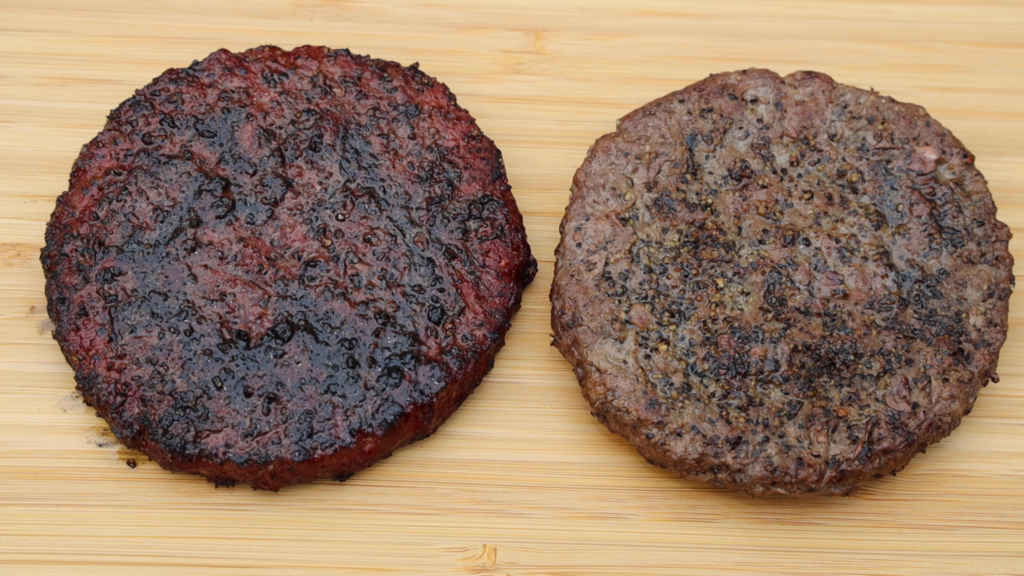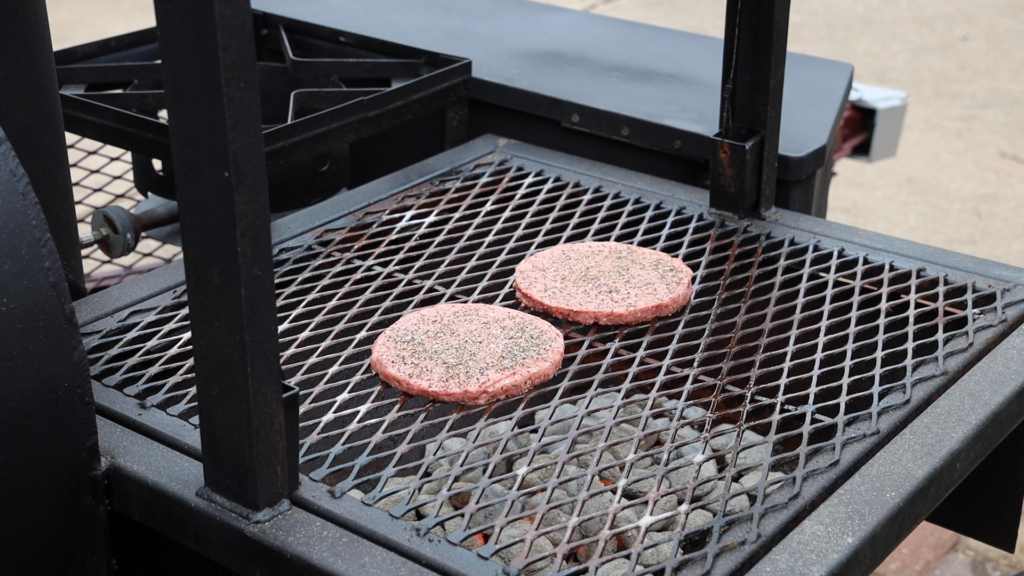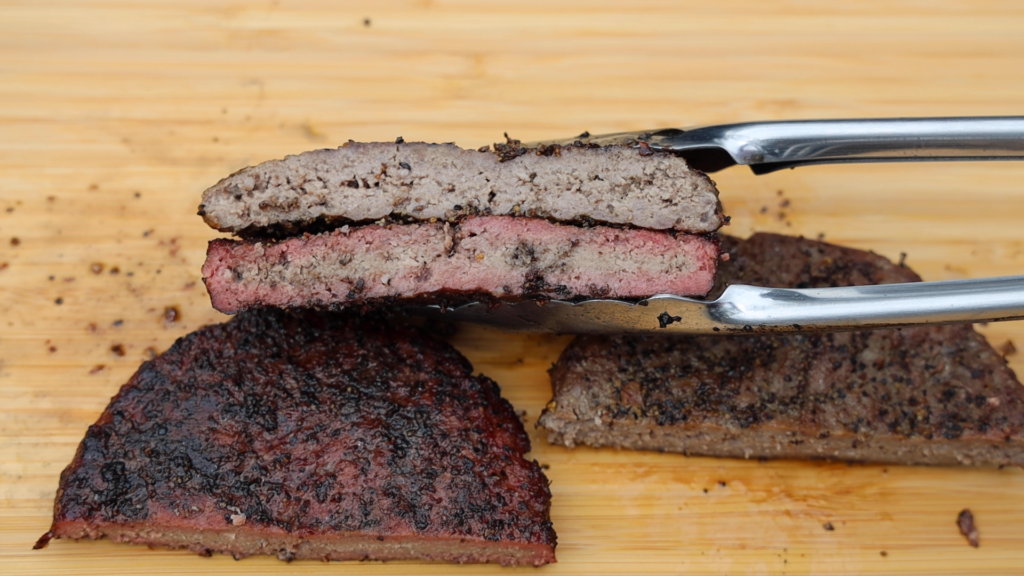Color and Food Safety Considerations When Smoking versus Grilling Ground Beef Patties

By Dr. Davey Griffin1, Professor and Extension Meat Specialist, Texas A&M AgriLife Extension Service
Ground beef is one of the most common beef products consumed. It is used as a main ingredient in thousands of recipes and stands alone or with condiments in hamburgers, cheeseburgers and many other methods of preparation. Because ground beef is so versatile, new recipes and cooking styles are constantly being featured and advertised through conventional as well as social media applications. Traditionally, ground beef patties would be grilled or pan fried, but lately some have placed the patties in a smoker at 250°F and smoked them until they reach a safe temperature. This creates a burger with a unique and distinctively different flavor profile, but may also give some consumers reason to pause to consider the safety of the meat.

Regardless of the cooking method, an added level of care must to be taken when properly cooking ground beef versus solid-muscle cuts like steaks. USDA Food Safety and Inspection Service recommends ground beef be cooked to 160°F in the center of the product to ensure safety. Due to the grinding process, ground beef of any type (ground from beef trimmings or ground from a whole muscle or roast) has thousands of times more surface area than a steak, so the potential for foodborne illness due to undercooking is higher and more care must be taken.
To accurately measure the temperature of a ground beef patty, use a properly calibrated thermometer and insert it into the side of the patty and penetrate into the center. If you are using a bi-metallic dial thermometer with a “dimple” in the shaft, be sure the dimple is all the way in the product Periodically calibrating your thermometer and also understanding the type of thermometer you are using will help ensure that the ground beef is cooked to a safe temperature and not overcooked to a point of drying the meat and making it less palatable than it should be.
Grilling beef patties has long been accomplished directly over charcoal, or gas fired grills. It is recommended that the grill reach a temperature of 400 – 500°F before putting steaks and in this case, patties on the grill. To be sure you are at the correct temperature, carefully place your hand a few inches above the grate. If you can only keep it there for 2-3 seconds before it gets too hot, the grill is ready. Place the patties over the heat and when moisture and meat pigments (mainly myoglobin) are accumulating on the top surface, flip and begin periodically monitoring the internal temperature. Remove them from the heat when they reach 160°F and place on a clean plate or surface.

Smoking beef patties is typically accomplished using indirect heat and smoke. A smoker can operate at any temperature, but many recommend optimal temperatures in the 250°F range. The heat source can be electrical or propane driven, but the majority of smokers would be driven by wood. Even the “pellet smokers” offered today are fueled by wood pellets. Obviously, the cooking time to reach the desired 160°F temperature is longer. During cooking, the smoke produced by burning wood with an open flame produces nitrogen dioxide (NO2) which penetrates the patties easier than a solid muscle cut. The NO2 reacts with hydrogen to create nitric oxide (NO) and the NO binds with the major meat protein, myoglobin. This forms a stable pink color in the meat that is commonly referred to as a “smoke ring”. In large cuts such as briskets, the ring would lie just below the cut surface, but in meat patties, the reduced thickness and fragmented texture frequently allows smoke to penetrate deeper, even to the point of penetrating all the way through the patty, creating pink colored lean throughout the meat.
Although the unique flavor of a smoke patty, and even the presence of the smoke ring may be extremely desirable to some, it may set off an alarm for others. Many people still are under the impression that visually appraising the internal surface of cooked ground beef is adequate for determining degree of doneness and food safety. The USDA Food Safety and Inspection Service indicates that there are conditions that make ground beef appear brown and therefore “done” when it is not (premature browning), and pink or red “undercooked” when it is actually fully cooked (persistent pinking). If a consumer were to cut into a fully cooked, smoked patty and visually see the pink smoke ring, the color might easily be misunderstood as undercooked and return it at a restaurant, or if at home put it back on the heat to try to increase the degree of doneness. Therefore, the use of a properly calibrated thermometer during cooking can increase consumer confidence that the patty they are consuming was prepared in a way that reduces the risk of foodborne illness.
Many foodservice establishments are continually exploring new menu options. Barbecue Restaurants wanting to broaden their menu, or have a feature item may consider an item like smoked hamburgers. Restaurants and backyard chefs alike serving smoked meat patties should make themselves, waitstaff, chefs and other employees aware of the potential consumer concerns and be prepared with the information above to inform them of the safety of the product.
-30-